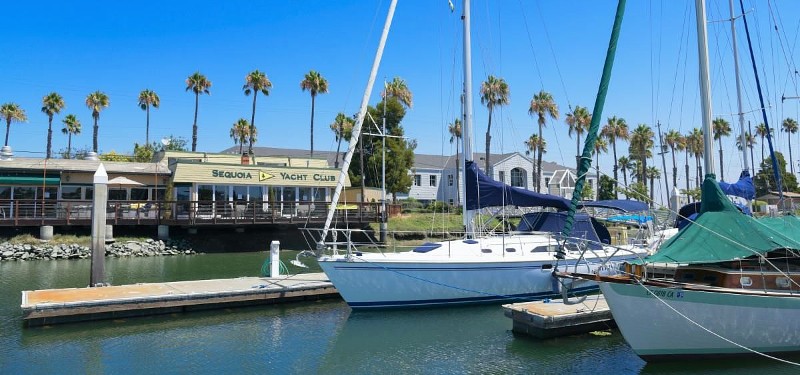By Jim Clifford
The Port of Redwood City is seeking “innovative proposals” which will deliver “a unique waterfront destination experience.” Here’s one suggestion: a museum highlighting Redwood City’s maritime history, which reaches back to the days of wooden ships and encompasses several headline-grabbing stories, including the launching of a freighter made of concrete. Top billing, however, surely goes to a mysterious barge that involved the CIA and Howard Hughes.
The port’s plea for new ideas came in March when it issued a Request for Proposals that port officials hope will result in development of several acres described as “just waiting to be re-imagined.” Port Director Kristine Zortman said, “We are in an exciting time where we can look to celebrate our history while creating a new vision for our future. We love to promote our port and look forward to creating a wonderful destination for our community.”
Recently named Woman of the Year by the Redwood City-San Mateo County Chamber of Commerce, Zortman was surprised to learn that, “Many people don’t know there is a port here,” even though, as the only deep-water port in the region, Redwood City handles thousands of tons of shipping.
Expanded Public Amenities
Recent new ventures at the port include the commercial fishing boat Pioneer which offers fresh fish sales nearly every weekend on the waterfront as bands perform nearby. Also, the public fishing pier that dates back to the 1950s has been replaced. BTW: No license needed. The port is also involved in a project that envisions a ferry service to Redwood City.
As someone who appreciates the role that the waterfront has played in Redwood City, it seems like a museum would fit right into this new vision. But it appears a museum would be a longshot. Port Commissioner Lorianna Kastrop says what’s really needed is a restaurant. Fellow Commissioner Ralph Garcia said a retail business would be most important. Both agreed, however, that a museum would be a welcome addition if feasible.
—
This story appeared in the May edition of Climate Magazine.
—
Few people today realize that Broadway was once called Bridge Street. A drawbridge across the downtown creek allowed boats to sail to open water, according to Roy Cloud’s history of Redwood City, written in 1928. In addition to handling cargo, Redwood City had a thriving boat-building business. The first vessel was built in 1852 and, appropriately named Redwood, carried hay, wood and other cargo throughout the Bay Area. The building of other vessels soon followed. Many, including the Redwood, were “scow schooners,” flat-bottomed boats that have been described as “the big rigs of their day.”
A First in America
The most unusual ship built in Redwood City had to be the Faith, a freighter that drew international attention when it was launched in 1918, becoming the first American ship made of concrete. People came “from every direction by train, in automobile and by water,” the Redwood City Democrat reported. Faith carried cargo to ports as far apart as New York and Honolulu before its sailing days ended in 1921. It later became a breakwater in Cuba.
In more recent times, Redwood City was home port to two top-secret ventures, the most famous a 1970s effort by the CIA to recover a sunken Soviet submarine from the Pacific depths in order to gain code books and other intelligence items. A huge barge that housed key equipment used in the operation sat on the waterfront, looking like an airplane hangar crossed with a drive-in movie screen. The letters HMB were emblazoned on the barge, leading some to speculate it had something to do with Half Moon Bay. Actually, the large letters stood for Hughes Mining Barge. The cover story circulated that reclusive billionaire Howard Hughes planned to use the submersible barge to gather valuable minerals from the ocean floor.
After part of the submarine was recovered, or not, depending on the source, the barge remained in Redwood City. Another top-secret vessel, named the Sea Shadow, was built inside the barge. The 164-foot-long Sea Shadow was dubbed a “stealth ship” because the Navy hoped its unusual design – it resembled an A-frame house boat – would allow it to slip under radar. The ship was eventually scrapped, but, at last report, the barge was working quite successfully as a floating dry dock.
From the Better Late than Never Department: Last June’s column, headlined “A Child’s Life in the Sequoia Hotel,” was about Gordon Seely, who lived in the hotel as a boy. We said he was 4 when he started living in the hotel. Turns out he was born when his parents lived in the Sequoia. The latest issue of the Journal of Local History, published by the history room at the city library, has a story on the Seely family in its feature, “We Share Your Stories.”
Photo credited to Port of Redwood City






